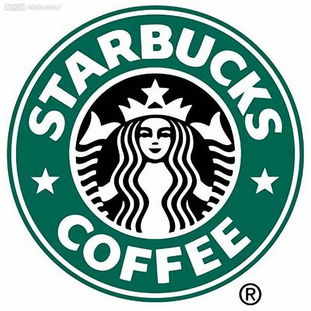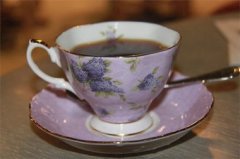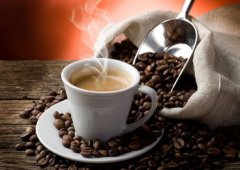The development of Kopi Luwak from Starbucks to Starbucks to brand marketing
Kopi Luwak (Kopiluwak Coffee is made from Indonesian coconut cat feces, so it is called "Kopi Luwak") has been on the domestic market for some time, but on the whole, it still understands the market. Although it is still the best coffee in blending, it has never seen where the "best" is. In the last year or two, this so-called "best" has made people feel a little bit. Just look at the price. The "best" price is 268 yuan per cup.

Starbucks began its strategic transformation in the past two years, and after the trademark further simplified the image of the banshee, it accelerated the pace of expansion. It is said that there were more than 90 companies in China last year. In a sense, it has reduced its stature and increased the number of contract manufacturing products of its own brand. After the strategic transformation of Starbucks, the main unit focused on the selection of Hong Kong partners.
Starbucks relies on Howard. Schultz's own absolute dominance makes Starbucks unboiled, honorable and best-selling all over the world. He first sorted out Starbucks' previous "a little mess", and then positioned Starbucks under the theme of coffee. Starbucks' impression of Chinese is a small, irregular place in a high-end office building, a bar of a few square meters and some brown coffee sofas, plus a few small round tables that are not very high-end. Some of them are open-air, and so on.
The choice of this address is the first lifeline for Starbucks, and I guess it must have something to do with the level of the office building. Because opening a shop in this place is not only the basis of coffee price, but also the basis of brand dignity. Choose a coffee shop on the first floor of a high-end office building, which is not only a place for senior business personnel, but also a place where people with status often go in and out. No matter what Starbucks sells, putting up a sign here is already very influential. As a result, the clever Schultz said not to advertise, in fact, Grade An office building itself is a very good advertising carrier; the so-called pragmatic style of relying on word-of-mouth communication makes Starbucks more honorable.
If Starbucks' secret is to open stores in high-end office buildings, then to beat Starbucks, it must open stores in higher-level office buildings or in more luxurious places, or in more expensive locations. Kopi Luwak began to adopt a bundling strategy, partnering with some well-known supermarket chains, such as Jusco, which was not effective enough to overwhelm Starbucks. Because although the catering institutions that work with Yoshima are also very advanced, they are not enough to surpass Starbucks. In other words, Kopi Luwak and Yoshima and Yoshima partners "stand" together, can not find the feeling of a coffee shop. To put it bluntly, if you open a store in a place like this, you can never surpass Starbucks.
In today's brand world, if you want to gain an advantage, you must first gain a brand advantage. In fact, who doesn't know, whether it's Starbucks or Kopi Luwak? The things sold are all the same, but the place is different from the brand. Under such a cognitive premise, it is key for Kopi Luwak to challenge its position as the leader of coffee with the cognitive fact that Kopi Luwak is the "best" coffee in the world. Starbucks obviously sells more categories than Starbucks does.
In this sense, to beat Starbucks, we must first surpass Starbucks in the location. Kopi Luwak is based in Guangzhou, it must first seize a dominant position in the important areas of Guangzhou, and the relative number to form a consumer cognitive advantage. In addition to the cooperation mentioned above, Kopi Luwak has chosen to showcase itself in a position comparable to or even more creative with Starbucks. After opening the first store in China Plaza, some places such as Sports East Road have also opened stores one after another.
The creative thing is to open a store in Guangzhou's most popular book shopping center. I carefully looked at the doorway of the site: it was originally part of the first floor of the Guangzhou Book purchase Center, and it used to be a specialty store for all kinds of souvenirs: Olympic souvenirs, Asian Games souvenirs, etc., but now it has opened a store on the side of the front door. and it's connected to the inside of the bookstore. I think this is the most powerful store that Kopi Luwak has ever opened. Due to the continued growth of online book purchases, business in brick-and-mortar bookstores is obviously not easy. Digging corners, we can see that Kopi Luwak's management team has entered the marketing state, as long as the financial strength is enough, we will first be able to establish Kopi Luwak's best consumer awareness in Guangzhou.
Starbucks, on the other hand, is clearly expanding the range of items sold in supermarkets. This practice runs counter to brand positioning. At the same time, the number of products sold within Starbucks stores is also increasing, and the number of contract products is also increasing. This trend of expansion is a trap for the brand. From 2011 to today, Starbucks is still in a chaotic consumer perception. Recently, I opened a Starbucks downstairs. Although, my location is not a high-end office building, but the community; however, Starbucks is entered with Pizza Hut and KFC; and the three houses occupy a row of buildings and are connected. What is more interesting is that Pizza Hut and KFC, which were originally a family, deliberately sandwiched the small Starbucks in the middle and separated them in order to maintain the brand.
Because this location can be seen from upstairs, I have been paying attention to the decoration of this store from the very beginning. As a result, to my great surprise, it was finished in less than a week. Moreover, according to the decoration master, more than a dozen houses will be decorated in Guangzhou in January alone. And their decoration requirements are extremely strict, and Hong Kong personnel come to guide and supervise the construction. It is very fastidious in all aspects, and there are many ways in it. Although, from the appearance, there is no difference, in fact, there are a lot of skills to attract consumption. You may resent it when you know that merchants are using techniques to induce you to spend. Specifically, they consider and deploy from all aspects, such as painting, color, taste, smell, inner space, layout, internal and external connection, etc., especially consumer psychology.
In terms of branding in coffee shops, talents cannot but be mentioned. Hong Kong people are indeed superior in terms of branding. Whether it is Starbucks, Bangmei Shu, or Wang Laoji or Jiadobao, the successful operation comes from Hong Kong people. Through the decoration of Starbucks downstairs, I deeply feel that Hong Kong people have extremely meticulous research on brand building. In terms of the experience of brand consumption, the reality of every inch of land in Hong Kong has created a large number of elites in the operation of Hong Kong brand stores.
Coffee is a consumer product that comes from Europe and the United States. Brands and products that are popular in developed countries have a natural advantage in going global, which is also a reflection of people's own needs. In the process of shaping the location of coffee shops, operators have successfully implanted their own brand stores into landmark buildings with the help of local people's respect for local buildings and familiar recognition, which is indirectly implanted into the hearts of consumers, that is, in the minds of consumers as mentioned in the positioning theory.
This is obviously a shortcut, which comes from the effect of being proportional to the investment in advertising. In other words, opening stores in high-end office buildings is actually a brand practice different from media advertising. I believe that this effect is much more pragmatic than the idea of "I don't know where the other half of the advertising money goes." In terms of a city, that is, for consumers in this city, opening a shop in the location of the most iconic building in the city is the best area for positioning, which is equivalent to advertising in the best time of traditional media such as television. Unlike media advertising, opening a store at a landmark location requires a certain amount of synergy in a city. One is the best time expression; the other is the best spatial position expression.
Coffee has become synonymous with store consumption, which is the success of brand building. The categories, stores and brands of a FMCG blend together. It is true that Starbucks is now synonymous with coffee and coffee shops. If Bangmei Shu wants to gain something in this respect, Starbucks must become the object of its conquest, which is the battle of brand awareness, the war of store location, and the war of store number in the future.
Important Notice :
前街咖啡 FrontStreet Coffee has moved to new addredd:
FrontStreet Coffee Address: 315,Donghua East Road,GuangZhou
Tel:020 38364473
- Prev

Individual coffee knowledge fine charcoal roasted coffee
Charcoal roasted coffee is a Japanese coffee, refers to a taste, almost no acid, strong scorched bitterness and glycol, the taste is relatively strong. Authentic charcoal-roasted coffee is generally deeply roasted with carbon fire (gas, carbon fire and infrared), the color is dark, the taste is fragrant and mellow, the taste does not feel sour, if condensed milk has a flavor. Flavor: special aroma, sweet and mellow
- Next

What is boutique coffee? how do you evaluate it?
Generally speaking, the level of coffee in circulation in the market is based on the export specifications of various countries.
Related
- Beginners will see the "Coffee pull flower" guide!
- What is the difference between ice blog purified milk and ordinary milk coffee?
- Why is the Philippines the largest producer of crops in Liberia?
- For coffee extraction, should the fine powder be retained?
- How does extracted espresso fill pressed powder? How much strength does it take to press the powder?
- How to make jasmine cold extract coffee? Is the jasmine + latte good?
- Will this little toy really make the coffee taste better? How does Lily Drip affect coffee extraction?
- Will the action of slapping the filter cup also affect coffee extraction?
- What's the difference between powder-to-water ratio and powder-to-liquid ratio?
- What is the Ethiopian local species? What does it have to do with Heirloom native species?

